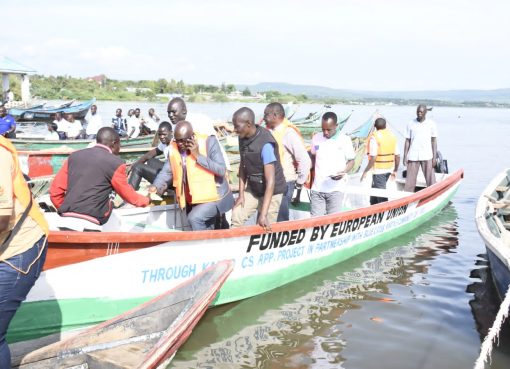The County government of Nakuru is partnering with United States Agency for International Development (USAID) to reduce TB-related mortalities and incidences through increasing of public information on prevention, care and control of the infectious disease.
According to statistics from the Ministry of Health the disease kills at least 60 people daily with nearly 100,000 infections each year.
It is also said that the TB costs the country nearly Sh 11 billion annually in hospitalization costs, absenteeism from work, death and expenditures for care.
Nakuru County Executive Committee Member (CECM) for Health Roselyn Mungai said Nakuru had been selected as one of the focus counties for the USAID ‘Tamatisha TB’ project, an initiative she explained was designed to accelerate Kenya’s progress toward achieving “End TB” targets.
Mungai said the five-year USAID ‘Tamatisha TB’ project being implemented by the Centre for Health Solutions (CHS), is meant to accelerate progress toward achieving Kenya’s End TB targets and will employ several strategies to increase TB case detection including deploying advanced screening tools like computer-aided digital X-ray with Artificial Intelligence to enhance bacteriological confirmation, increasing community awareness, and engaging private sector partners.
The CECM further said the partnership involved a plan to check the spread of tuberculosis (TB) in Nakuru County and seeks to involve individuals and organizations in pooling resources to tackle the disease and also increase public information on TB prevention, care and control.
She added that the project aims at transforming TB prevention, diagnosis, and treatment through innovative approaches while addressing the needs of key populations such as children, men, and adolescents.
Mungai further explained that the project’s strategies included targeted case finding, contact investigations, and non-sputum diagnostics to improve early detection in addition to providing child and adolescent-friendly TB services, promoting school-based TB programs and expanding community-based TB prevention therapy (TPT).
“With a patient-centered approach, we commit to fully support this project with emphasis on predictive hotspot identification and sustainability through community-led efforts,” Mungai assured.
Speaking during an inception meeting of the USAID TAMATISHA Tuberculosis (TB) Project, the CECM noted that despite significant progress in HIV treatment, with Antiretroviral treatment (ART) uptake reaching 98.2 per cent in 2023, concerns remain about TB case detection and treatment completion, particularly among high-risk groups.
The CECM called for the integration of nutrition support and rehabilitation programs for alcoholics to reduce rising defaulter rates and outlined the County TB Program’s focus areas, including defaulter tracing, enhanced uptake of TB Preventive Therapy (TPT), and strengthening the sample referral system.
A recent report from the Ministry of Health (MOH) has sounded the alarm over a rising tide of TB/HIV co-infections in the country.
The national co-infection rate has increased to 25 from 23 per cent in 2022 according to the National Tuberculosis, Leprosy and Lung Disease programme.
Published in August this year, the findings show that in 2023, counties in western Kenya, including Kisumu, Homabay, Siaya, and Busia had the highest co-infection rates
In contrast, counties like Baringo, Mandera, and Wajir reported significantly lower rates of 14 per cent, 3 per cent, and 1 per cent, respectively.
Overall, the country’s TB incident cases (new and relapse) were at 88,895, a case detection rate of 74 per cent. However, data from the report shows that at least 26 per cent of cases go unreported.
Head division of Tuberculosis and other lung diseases at the Ministry of Health Dr. Immaculate Kathure, reported that Kenya detected 97,126 TB cases in 2023, representing a 7.2 per cent increase from the previous year. This translates to a 78 per cent treatment coverage rate, with 8.5 per cent of cases being previously treated.
“While Kenya transitioned from the list of high-burden Drug Resistant Tuberculosis (DRTB) countries, this remains a threat that could undermine the gains so far realized,” Dr. Kathure was quoted saying in a section of the press.
She further explained that the age distribution of TB cases in Kenya indicate that children aged 0–14 years accounted for 12,884 cases (13.3 per cent) of the total notified cases with the 25-44 age group having the highest number of TB cases, accounting for 63 per cent of the total cases.
Dr. Kathure explained that intensified efforts to find and treat TB patients led to a 7.2 per cent increase in treatment initiation compared to 2022.
These efforts included active case finding, targeted outreach, and the use of AI-powered X-rays, as a result of which 78 per cent of the estimated 124,000 people with TB in Kenya received treatment.
By Esther Mwangi




